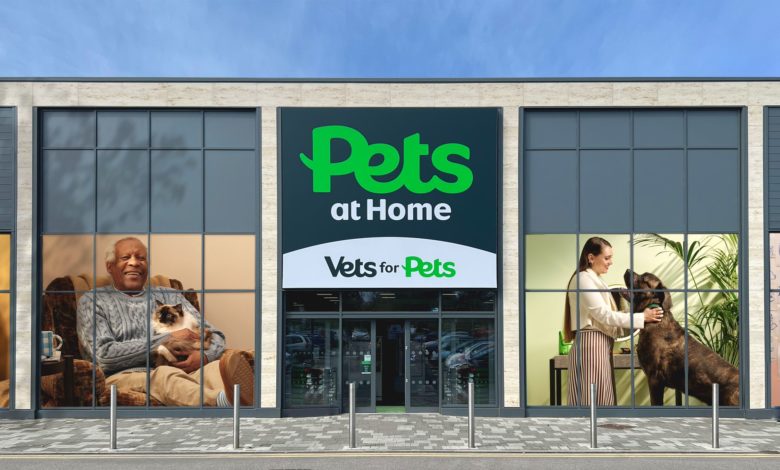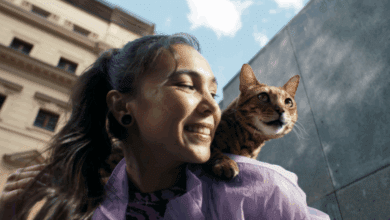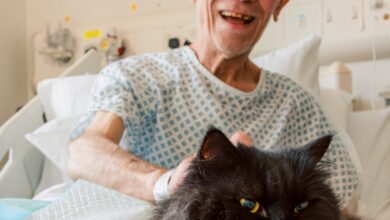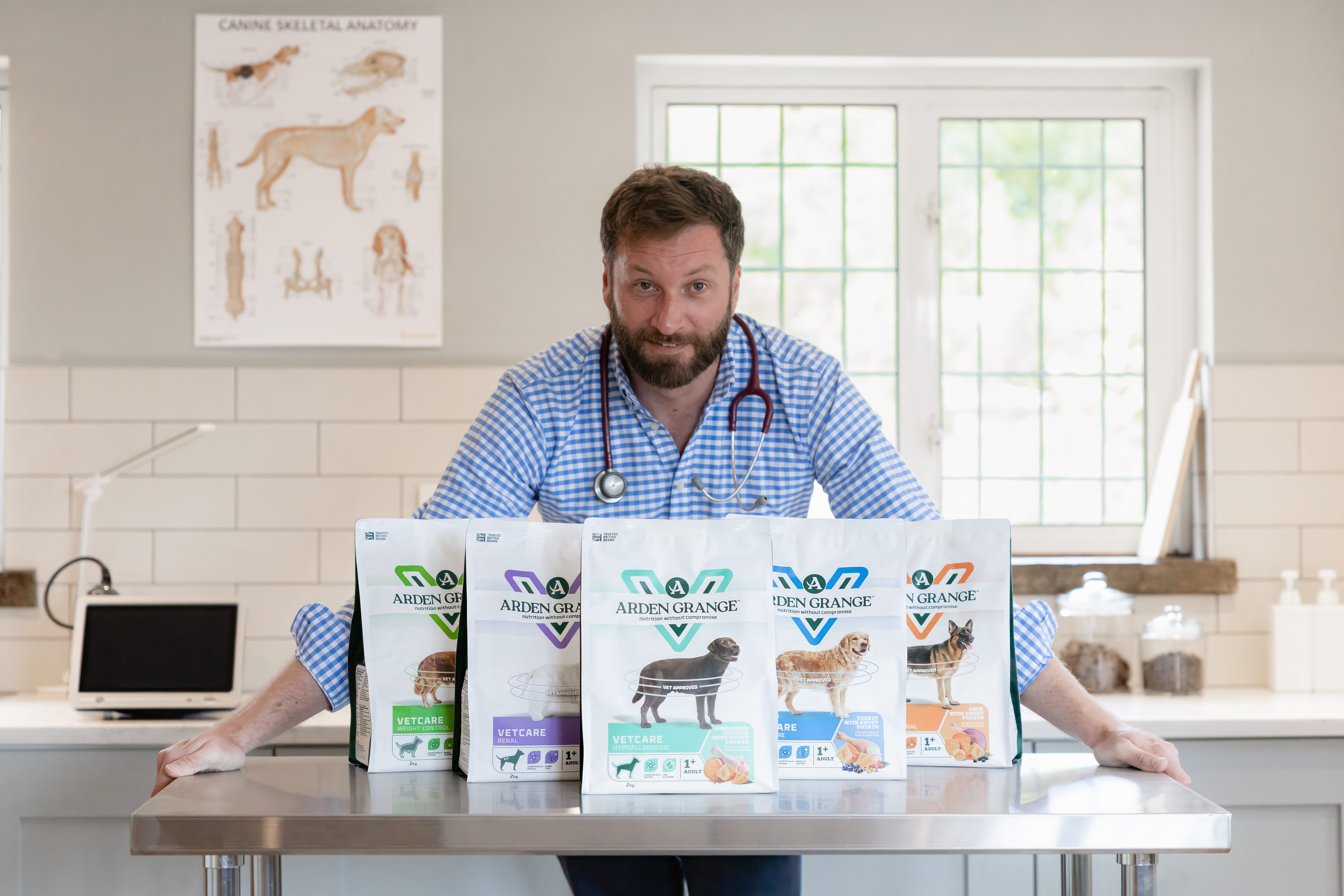Is Pets at Home really a victim of a ‘subdued’ pet market?
Pets at Home has parted ways with its CEO Lyssa McGowan and slashed its full year profit guidance due to what it calls a ‘subdued’ pet market. Retail Sector analyses the pet market as a whole and questions whether this is actually the case

Register to get 1 free article
Reveal the article below by registering for our email newsletter.
Want unlimited access? View Plans
Already have an account? Sign in
“It’s not just one issue behind Pets at Home’s challenges. A squeeze on household budgets, rising costs in real estate and shifts in consumer behaviour have combined with the challenges of delivering a broad ‘pet care platform’ strategy,” says Anna King, a retail consultant, of the troubles facing the UK’s largest high street pet retailer.
King is managing director, EMEA, of retail consultancy firm M+C Saatchi Consulting, which has worked with brands such as Mars and the Purina Unleashed Accelerator programme, so she knows a thing or two about the economics of the pet industry.
Pets at Home is seen as a powerhouse in the pet retail market, holding 24% market share according to its own figures, but last month, in a surprise for investors, it announced the departure of its CEO Lyssa McGowan as it downgraded its profit forecast to be in the range of £90-100m for FY26.
Since McGowan’s appointment in June 2022 the retailer has seen its share price lose more than a third of its value. On the day of her departure shares were down 22% at 178.1 pence, their lowest since March 2020 and have yet to recover to the levels before her departure. The company has also warned of a profit drop at the beginning of FY26 and has cut its full-year guidance twice.
So what is going on? Is this a case of poor leadership, a softening pet market or systemic problems with Pets at Home’s ongoing strategy?
A greater cause for concern?
“We think PETS” – the trading name for Pets at Home – “will need to invest to address underperformance from stores,” say analysts from financial services company RBC Capital Markets. In FY25, the retailer saw its profit before tax (PBT) rise 14% despite flat revenues. Its vet group consumer revenue was up 13%, while its retail consumer revenue was down 1.8%. “Subdued growth in the pet sector,” the company said, had weighed on retail sales despite a strong performance in its veterinary arm.
While this looks like a good performance driven by a strong cost base, analysts suggest that the strength of its veterinary business may be masking an underperformance in the retail space.
When announcing the departure of McGowan and lowering of its profit guidance in an “unscheduled trading update”, Pets at Home declared that its existing guidance assumed “the pet retail market would see a 1% market growth against which the company expected to return to market outperformance through FY26 as the investments we made in digital bore fruit”.
However, through Q2, the company has claimed that the “underlying pet retail market remained subdued”. By category, the company saw its food sales decline 1.2%. It put this down to “elements of deflation due to higher promotional participation across the industry”.
But does this analysis of the market conditions stand up to scrutiny? According to data from Bloomberg, the European pet market is expected to grow 4.6% from $125bn (£93bn) in 2024 to $131bn (£97.72bn) in 2025. Globally, it is expected to reach $381bn (£284bn) in 2025. King explains that while the sector’s fundamentals remain stable, discretionary sales are softening. “Essentials like food, health and veterinary services remain resilient, but discretionary categories – toys, accessories and treats – are under real pressure as consumers rein in spending,” she says.
What of Pets at Home’s competitors? Pets Choice, the fifth largest branded manufacturer on sales units in the retail channel according to Circana, saw its turnover increase to £112.6m, up from £108.7m for the year ended 31 December 2024. The company stated it was “against a backdrop of significant commodity inflation”, suggesting that it faced pressure on its margins across the supply chain. This shows that despite a tough trading environment the demand was still there.
On the supplier and direct-to-consumer (D2C) side of the marketplace, according to RocketReach, Wilsons Pet Food, a Scottish manufacturer of raw and fresh dog food, posted revenues of $4m (£3m) in 2024. Incidentally, the company secured a £1m investment from The Investment Fund for Scotland (IFS), managed by Maven Capital Partners back in January, in a show of confidence from investors in the overall strength of the market.
Pedigree Wholesale saw its turnover fall to £56.1m in the year ended 28 December 2024, down from £63m. The company said that “in 2024 the pet market remained resilient, but the company faced a more challenging trading environment”. It put its decrease in turnover down to a “continued slowdown in the e-commerce channel, which had previously benefitted from a post-Covid boom in pet ownership”.
Market shifts
According to Lucy Trott, managing associate and retail specialist at law firm Stevens and Bolton, the pet market is seeing a trend of ‘premiumisation’, with consumers prioritising better and more nutritious products for their pets, which represents a significant shift in attitudes among Pets at Home’s core customer base.
Trott, who has extensive experience in restructuring and insolvency, believes that this is causing the erosion of the middle tier where Pets at Home operates. While premiumisation is squeezing the top end of the middle market, the convenience and widespread availability of pet products in supermarkets is squeezing the bottom end of this segment. “Retailers in the mid-market will be feeling the squeeze from both ends,” she says. “Pets at Home stores are also often positioned on retail parks out of town, requiring a deliberate decision by consumers to shop there.”
This trend is also being felt by the manufacturers. Sam Marriage, managing director of pet food and feed manufacturer WHM, says his company is seeing groups of consumers that are either “very price focused or very keen to find the best products” with very little in between.
Craig Wilson, managing director of Wilsons Pet Food, believes this is part of a wider trend of increased humanisation in the market with owners placing more emphasis on making sure the food they buy for their pet is nutritious. This has been the case for a number of years and he says this has continued despite the economic troubles in the UK to the point that it is no longer a trend but the norm in the market.
The views of manufacturers in the industry do not necessarily line up with those of Pets at Home. “I think investing in pets is a bit like investing in gold, everyone invests in it when the economy is a bit shaky,” says Marriage. He explains that the economy of the pet industry works differently to the usual economy. In his view, the pet economy is still seeing the benefits of the boom in ownership during the pandemic as the life cycle of pets continues despite the economic downturn and people have continued to spend on their pets.
He also believes that in times of economic downturn, people tend to cut back on luxuries which occur outside of the house, such as holidays, meaning they tend to spend their money on things that will bring them joy in their homes, which often means spending on their pets or things like wild bird seed if they do not own any pets. This paints a different picture to the one described by Pets at Home.
What is next for Pets at Home?
Aside from the economic realities, societal changes have fundamentally altered the way that pets are viewed. Whereas once they were seen as additional, pets are now very much seen as part of the family and in some cases a replacement for things which are no longer as viable. Eli Wachsmann, co-founder of cat food and toy company Fuzzball explains that the changing nature of family life in the UK is contributing to the increase in pet population and therefore the overall strength of the retail market. “Whereas maybe a generation ago, people would have focused on starting a family in their mid 20s, people are now having families later, and a cat or dog is now seen as such a key part of people’s lives,” he says.
This means that growth in the pet market is likely to come in fresh food. Wilson states that despite only running for around two months, the company’s fresh food offering already represents a significant share of its turnover. Some of this can be put down to the newness of the offering, and it remains to be seen whether this sustains, but he thinks that the products that are attracting the most demand are the fresh products, which are “highly nutritious and highly convenient for the customer, and decent enough price point”.
Away from regular food Wachsmann also says Fuzzball has seen a shift away from the “somewhat unhealthy” cat treats like dreamies to healthy freeze dried treats, something that the company offers. This could leave major retailers like Pets at Home playing catch-up as they are likely to have deals with brands which are longer as desirable.
This is something the brand has admitted itself. In its FY25 annual report it stated that it needed to commit to well established product development processes to ensure its launches new or enhanced products and ranges to its core food, health, and accessories categories.
An issue for Pets at Home is the fact that a number of brands, such as Fuzzball and Wilsons, are operating a D2C model themselves. This means that smaller retailers which used to rely on retailers like Pets at Home are bypassing them and finding their own ways to reach consumers. That is not to say that these companies are completely opposed to working alongside major retailers but it does highlight the changing nature of the pet market. “We wanted to try and not just create a simple product and offer it to someone to sell but curate a whole experience,” Wachsmann explains.
King, Saatchi, thinks Pets at Home that when the company finally appoints a new CEO they will need to double down on its strengths rather than try to rectify its weaknesses. In her view the company must lean into its veterinary and prescription services, expanding digital memberships following the lead of some big brands in other countries. “In the US, Petco and Chewy have shown how subscription models for food, medicine and grooming keep revenue sticky even in downturns. Meanwhile, Germany’s Fressnapf has driven growth by pairing value-focused ranges with digital convenience and loyalty programmes that reward frequency,” she states.
By shifting from being merely a pet shop to offering a more holistic pet wellness experience the company can insulate itself from the volatile retail environment. Pets at Home competitor Jollyes is a good example of this model. The brand has embarked on a rapid store expansion programme and every new store is fitted with community pet clinics which offer essential vet services such as microchipping and vaccinations and some Jollyes stores also offer ‘Wash and Go’ dog-wash booths, clearly trying to position itself as being more than just a pet store.
There are signs that Pets at Home has recognised some of these areas in which competition is heating up, especially with the launch of its in-store subscription service Easy Repeat. However, it remains to be seen how well it can differentiate itself. As it stands Pets at Home has yet to announce a replacement for McGowan. Whoever steps into the breach will need to show investors and customers alike that they can put Pets at Home back in the race, and re-establish it as the ‘top dog’ once more.







